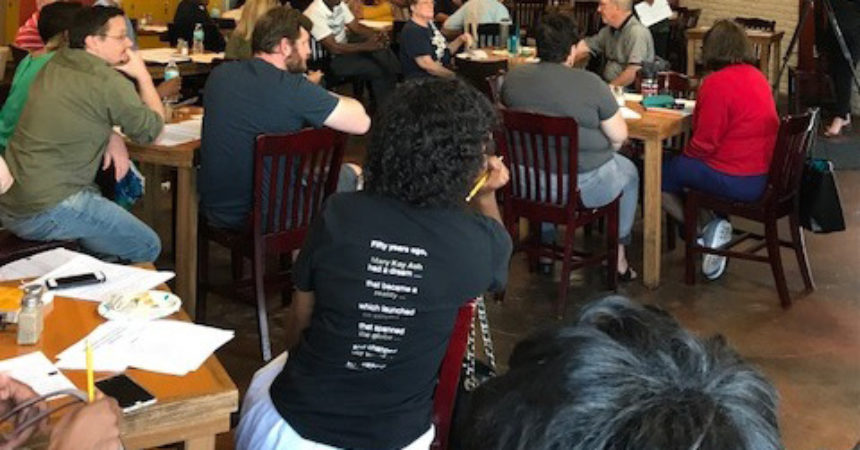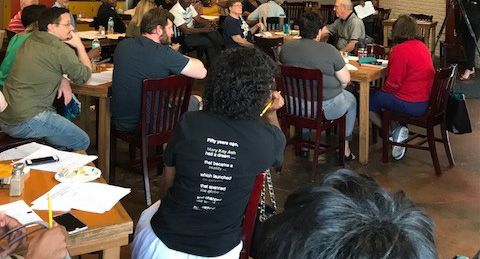
Southside residents vent, call for change

An enthusiastic crowd gathered for the first Southside United Citizens Action Alliance meeting last week.
Photo by Katrina Alexander

Dianne Williams-Cox explained the mission of the new Southside United Citizens Action Alliance.
Photo by Katrina Alexander
By St. Clair Murraine
Outlook staff writer
A group of Tallahassee residents that recently lost two corporate stores from their community has formed the Southside United Citizens Action Alliance to address issues that they say are stifling development.
Ultimately the group said it wants to change the perception of the Southside as a run-down, crime-infested and poverty-stricken section of town. They also say their neighborhood is being ignored by government.
The organization recently held its first meeting where most in the group of about 50 voiced outrage over several issues. Their priority list includes economical development, educational advancement, empowerment of the community and ethical healthcare.
The impetus for starting the organization was spurred by the recent closings of Winn-Dixie and Walgreens stores, the two largest corporate-owned businesses that were in the area.
Dianne Williams-Cox, who ran for a state House seat last year, facilitated the meeting at Earley’s Kitchen. Officers are yet to be elected and committees will be formed to focus on each issue, she said.
“I have a great concern that we are not being heard,” Williams-Cox said. “There is nothing worse than not being heard. If people are listening to you and they can’t do it; that’s one thing.”
“It’s going to take all of us to make this happen.”
A cross-section of residents, including business owners and college students, expressed pride in their community and concern that things could get worse before they get better. Seemingly there was a consensus that government could start a turnaround in the economic outlook of the Southside.
“People want better,” said Claudette Farmer, a former high school and college basketball coach. “What we want more than anything is economic opportunities. People need jobs (and) people want to be entrepreneurs. They don’t have the advantage of process with the banks. This is poverty over here and you can’t come out of it unless you have access to these resources.”
Farmer went on to lament disparity in education, pointing to schools on the north side of town compared to those that report failing grades on the Southside.
“We are all paying taxes,” she said. “There shouldn’t be such grave disparities in the schools from one end of town to the next. That needs to be corrected.”
A packet of information handed out by Williams-Cox showed some pertinent but seldom discussed statistics about the Southside. For instance, the area has a population of 32,382 as of 2015, representing 17 percent of Tallahassee.
The statistics also show that there is more diversity in the area than perceived, with 63 percent Black and 30 percent White. Persons under 20 represent (27 percent); almost as many as those between the ages of 40-60 at 22 percent.
They also grappled with determining what areas of Tallahassee are zoned south side. A map in the information packet showed that both FSU and FAMU are in the zone, where thousands of affluent people also live.
Putting more tax dollars into encouraging small businesses to set up on the Southside, would be a good start to change, said Joe Berg, president of the All Saints District Community Association.
The All Saints district is located between FAMU campus and Gaines Street.
“Small businesses are incubators of lift for neighborhoods,” Berger said. “Once you could get that trajectory going up, the community almost grows on its own. Southside has that.
“You’ve got to have that vision otherwise somebody else will have it, then you will have to move.”
However, Southside resident Tifany Hill said businesses that want to set up in her neighborhood should be thoroughly vetted.
“People that move into this area need to have their stuff together,” she said. “They need to think of the south side just like the north side. They always like to say the poor people are on that side of town.
“We need to put some brands in our area that are going to pull other brands that’s going to make people want to come and spend money in our area.”







